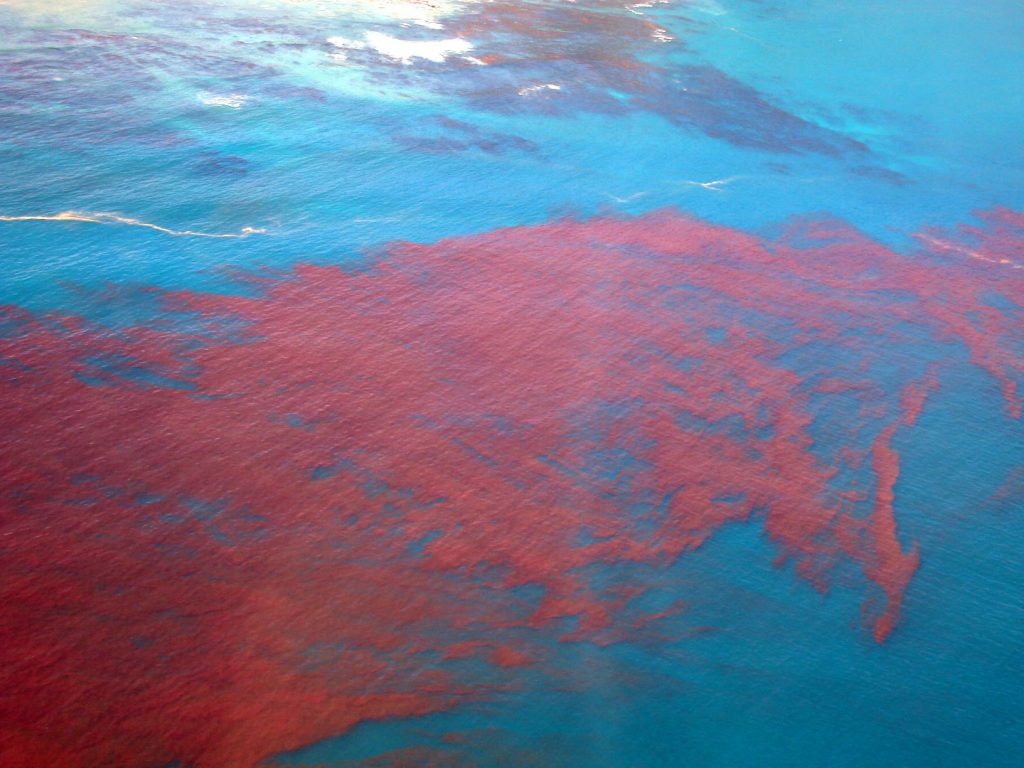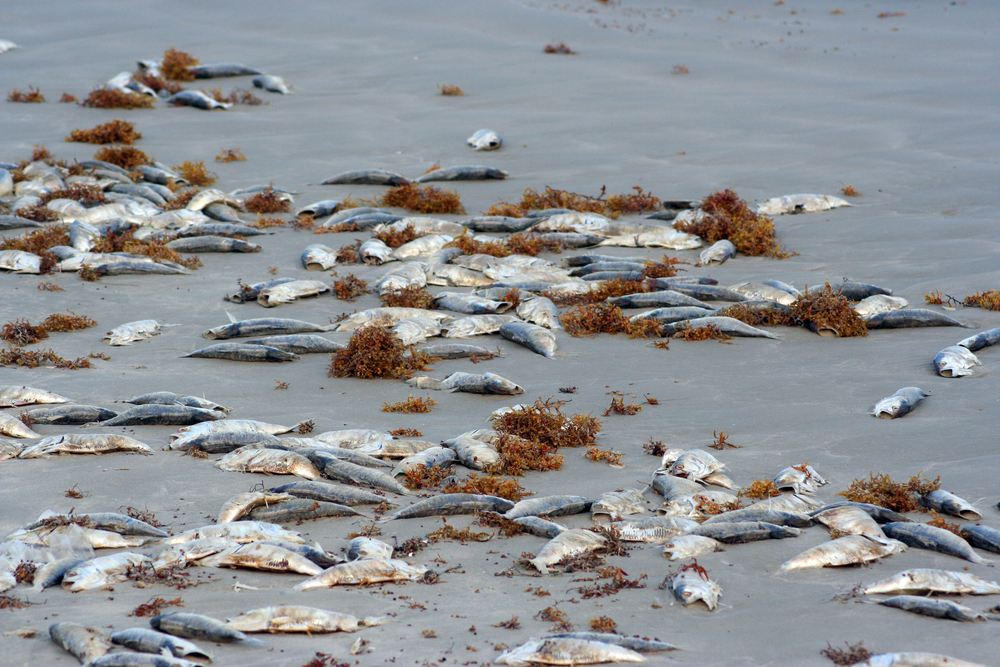Q: What is Red Tide?
A: Red tide is caused by microscopic algae (plant-like microorganism) called Karenia brevis or K. brevis. The organism produces a toxin that can affect the central nervous system of fish, birds, mammals and other animals.

Q: Is Red Tide, red?
A: At high concentrations (called blooms), the organisms may discolor the water – sometimes red, light or dark green, brown, or clear.
Q: Where does Red Tide occur?
A: Red tides occur worldwide. K. brevis is found almost exclusively in the Gulf of Mexico but has been found on the east coast of Florida and off the coast of North Carolina.
Q: How long does it last?
A: Red tide blooms can last days, weeks or months and can also change daily due to wind conditions. Onshore winds normally bring it near the shore and offshore winds drive it out to sea.
Q: What causes Red Tide?
A. A red tide bloom needs biology (the organisms), chemistry (natural or man-made nutrients for growth), and physics (concentrating and transport mechanisms). No single factor causes it. Tests are being conducted to see if coastal nutrients enhance or prolong blooms.
Q: Can I swim in water affected by Red Tide?
A: Most people can swim in red tide but it can cause skin irritation and burning eyes. If your skin is easily irritated, avoid red tide water. If you experience irritation, get out and thoroughly wash off with fresh water. Swimming near dead fish is not recommended.

Q: What are the symptoms I may experience after contact with Red Tide?
A: Symptoms from breathing red tide toxins are normally coughing, sneezing and teary eyes. These are usually temporary when red tide toxins are in the air. Wearing a particle filter mask may lessen the affects, and using over-the-counter antihistamines may decrease your symptoms. Check the marine forecast. Fewer toxins are in the air when the wind is blowing offshore.
Q: Are there people who are more sensitive to the toxins?
A: People with respiratory problems (like asthma or bronchitis) should avoid red tide areas, especially when winds are blowing toxins onto the shore. If you go to the beach, take your short acting inhaler with you. If you have symptoms, leave the beach and seek air conditioning.
Q: Who do I call if I think I have become sick from Red Tide?
A: Please consult with your primary care physician and contact the Coastal Health District at 912-262-2342.
Q: Can I eat seafood at restaurants during a Red Tide?
A: Commercial seafood found in restaurants and grocery stores is safe because it comes from red tide free water and is monitored by the government for safety.
Q: Can I eat seafood from recreational harvesting during a Red Tide?
A: Recreational fisherman must be careful:
 Do not eat mollusks (clams or oysters) taken from red tide waters, as they contain toxins that cause a food poisoning called NSP (Neurotoxic Shellfish Poisoning).
Do not eat mollusks (clams or oysters) taken from red tide waters, as they contain toxins that cause a food poisoning called NSP (Neurotoxic Shellfish Poisoning).- Finfish caught live and healthy can be eaten if filleted.
- Use common sense! Harvesting distressed or dead animals is not advised under any circumstances.
- Edible parts of other animals commonly called shellfish (crabs, shrimp and lobsters), are not affected by the red tide organisms and can be eaten. Do not eat the tamale (green stuff, hepatopancreas).
Q. Whom can I contact to report a Red Tide bloom or to get more information about water quality?
A: Contact any of the following:
- Georgia Environmental Protection Division at (912) 264-7284
- Georgia Coastal Resources Division at (912) 264-7218
- Georgia Coastal Health District (912) 262-2342
 The advisory is only for the area specified above and does not impact any other beaches on the island. There is no way of knowing if going into water that is under advisory will result in illness; however, this beach water advisory is to alert the public of a possible risk of illness associated with water contact. An area under advisory does not mean the beach is closed.
The advisory is only for the area specified above and does not impact any other beaches on the island. There is no way of knowing if going into water that is under advisory will result in illness; however, this beach water advisory is to alert the public of a possible risk of illness associated with water contact. An area under advisory does not mean the beach is closed.


 There are things you can do to lower your high blood pressure:
There are things you can do to lower your high blood pressure: Financial Services
Financial Services





